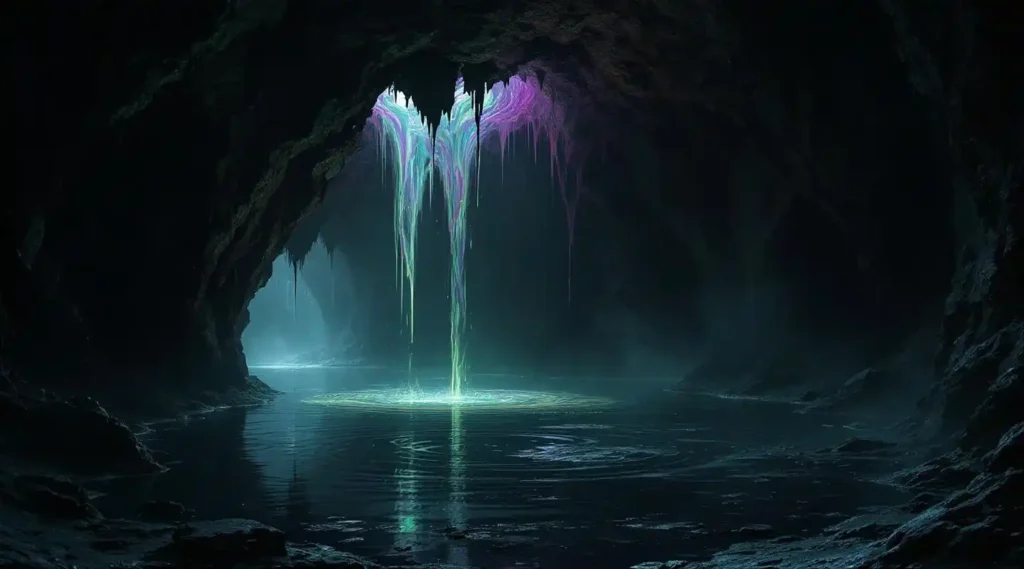

Understanding Aquifers & Their Dangers
When most people hear the term “Spring Water” or imagine an underground river, they imagine pristine things – maybe even fairy tale like caverns with secrets buried inside, giant crystals and beauty.
The reality is more analogous to the earths circulatory system, Aquifers stem from deep underground caverns and can run for hundreds of miles. Often they are healthy and more or less filled up, but they represent a threat.
When Aquifers are over-tapped, the level of water in them depreciates – and this can happen rapidly. Causing deep cave ins underground, resulting in sink-holes above ground.
In this short explainer, we are going to cover the good, bad and ugly of Aquifers and let you be the judge if it’s worth protecting yourself as much as you can from rivers of questionable water simply flowing underground.
Understanding Aquifer Contaminants: What Pollutants Can Enter Our Water Supply?
Aquifers are vital underground reservoirs that store freshwater, providing a significant portion of the drinking water supply for millions of people. However, these essential resources are not immune to contamination. Various pollutants can infiltrate aquifers, leading to serious health risks and environmental concerns. This article explores the types of contaminants that can affect aquifers, their sources, and the implications for water quality and public health.
The Importance of Aquifers
Aquifers play a crucial role in the hydrological cycle, acting as natural filters that store and transmit groundwater. They are primarily composed of porous rock, sand, or gravel, which allows water to flow through them. The water stored in aquifers is often referred to as groundwater, and it is a critical resource for drinking, irrigation, and industrial processes.
Types of Aquifers
Aquifers can be classified into three main types based on their geological characteristics:
- Unconfined Aquifers: These aquifers are directly recharged by rainfall and surface water. They are more susceptible to contamination since there is no protective layer above them.
- Confined Aquifers: These are trapped between layers of impermeable rock or clay, which can protect them from surface pollutants. However, if contaminants penetrate the confining layer, they can be difficult to remove.
- Semi-confined Aquifers: These aquifers have both confined and unconfined characteristics, making them vulnerable to contamination from both surface and subsurface sources.
Common Contaminants Found in Aquifers
Aquifers can be contaminated by a variety of pollutants, which can originate from natural processes or human activities. Understanding these contaminants is essential for protecting water quality.
1. Chemical Contaminants
Chemical pollutants are among the most common contaminants found in aquifers. They can originate from agricultural, industrial, and urban sources.
- Pesticides and Herbicides: These chemicals are widely used in agriculture to control pests and weeds. Rainfall can wash these substances into the soil, where they may leach into aquifers.
- Fertilizers: Nitrogen and phosphorus from fertilizers can seep into groundwater, leading to nutrient pollution. This can cause eutrophication in surface water bodies, harming aquatic ecosystems.
- Heavy Metals: Industrial activities can release heavy metals like lead, mercury, and cadmium into the environment. These metals can accumulate in groundwater and pose serious health risks.
2. Microbial Contaminants
Microbial contamination is another significant concern for aquifers. Pathogens can enter groundwater through various routes, leading to waterborne diseases.
- Bacteria: Common bacteria such as E. coli and Salmonella can contaminate groundwater, often from septic systems or agricultural runoff.
- Viruses: Viruses can also infiltrate aquifers, particularly from human and animal waste. Contaminated water can lead to outbreaks of diseases like hepatitis A.
- Protozoa: Organisms like Giardia and Cryptosporidium can survive in groundwater and cause gastrointestinal illnesses when ingested.
3. Physical Contaminants
Physical contaminants can affect the quality of groundwater and its usability.
- Sediments: Erosion and runoff can introduce sediments into aquifers, which can clog wells and reduce water quality.
- Salinity: In coastal areas, over-extraction of groundwater can lead to saltwater intrusion, where seawater contaminates freshwater aquifers.
Sources of Aquifer Contamination
Understanding the sources of contamination is crucial for developing effective management strategies to protect aquifers.
1. Agricultural Practices
Agriculture is a significant contributor to aquifer contamination. The use of fertilizers, pesticides, and herbicides can lead to nutrient and chemical runoff, which can infiltrate groundwater.
- Nutrient Runoff: Excessive use of fertilizers can result in nutrient runoff during rainfall, leading to elevated nitrate levels in groundwater.
- Pesticide Leaching: Pesticides can leach into the soil and reach aquifers, especially in areas with sandy soils that allow for rapid infiltration.
2. Urban Development
Urbanization can exacerbate aquifer contamination through increased impervious surfaces and wastewater generation.
- Stormwater Runoff: Urban areas often have more impervious surfaces, leading to increased stormwater runoff that can carry pollutants into aquifers.
- Wastewater Disposal: Improperly managed septic systems and sewage treatment plants can introduce pathogens and chemicals into groundwater.
3. Industrial Activities
Industries can release a variety of pollutants that may contaminate aquifers.
- Chemical Spills: Accidental spills of hazardous materials can lead to immediate contamination of nearby aquifers.
- Landfills: Poorly managed landfills can leach toxic substances into the groundwater, posing long-term contamination risks.
Health Implications of Contaminated Aquifers
The presence of contaminants in aquifers can have serious health implications for communities relying on groundwater for drinking and irrigation.
1. Waterborne Diseases
Contaminated groundwater can lead to outbreaks of waterborne diseases, which can be particularly dangerous for vulnerable populations.
- Gastrointestinal Illnesses: Pathogens in contaminated water can cause severe gastrointestinal issues, leading to dehydration and hospitalization.
- Long-term Health Effects: Prolonged exposure to contaminated water can result in chronic health conditions, including certain cancers and reproductive issues.
2. Chemical Exposure Risks
Chemical contaminants can pose significant health risks, particularly when consumed over extended periods.
- Heavy Metal Toxicity: Long-term exposure to heavy metals can lead to neurological damage, kidney dysfunction, and other serious health problems.
- Endocrine Disruption: Some chemicals can disrupt hormonal systems, leading to reproductive and developmental issues.
Prevention and Mitigation Strategies
To protect aquifers from contamination, various strategies can be implemented at the community and policy levels.
1. Sustainable Agricultural Practices
Adopting sustainable agricultural practices can significantly reduce the risk of aquifer contamination.
- Integrated Pest Management (IPM): This approach minimizes pesticide use by employing biological controls and crop rotation.
- Nutrient Management Plans: Implementing nutrient management plans can help farmers apply fertilizers more efficiently, reducing runoff.
2. Urban Planning and Management
Effective urban planning can mitigate the impacts of urbanization on aquifers.
- Green Infrastructure: Incorporating green roofs, permeable pavements, and rain gardens can help manage stormwater and reduce runoff.
- Wastewater Treatment Improvements: Upgrading wastewater treatment facilities can minimize the risk of pathogens entering groundwater.
3. Regulatory Measures
Government regulations play a crucial role in protecting aquifers from contamination.
- Monitoring Programs: Regular monitoring of groundwater quality can help identify contamination sources and trends.
- Land Use Regulations: Implementing land use regulations can prevent industrial activities and agricultural practices that pose risks to aquifers.
Conclusion
Aquifers are essential resources that provide drinking water and support ecosystems. However, they are vulnerable to a range of contaminants that can compromise water quality and public health. By understanding the sources and types of pollutants that can affect aquifers, communities can implement effective strategies to protect these vital resources. Sustainable practices, urban planning, and regulatory measures are key to ensuring the safety and sustainability of our groundwater supplies for future generations.

